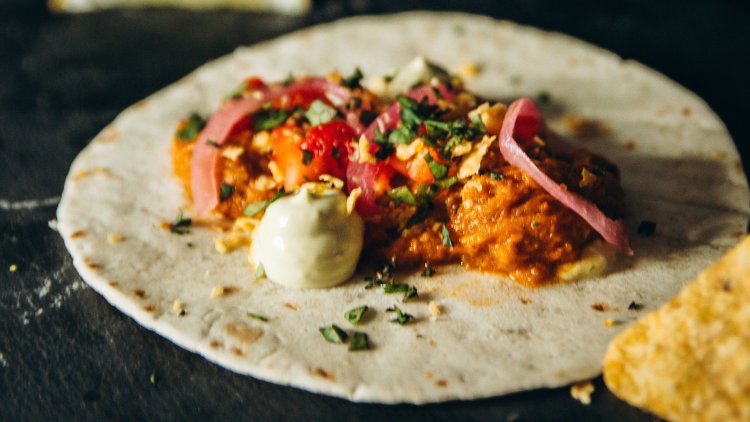The Rise of Asian Cuisine in Europe
European dining evolves with the surge of Asian flavors-sushi, Thai spice, and innovative fusions redefine the palate in a celebration of diverse culinary traditions.

Introduction
In the ever-evolving world of culinary delights, one of the most notable trends to sweep across Europe in recent years has been the exponential rise of Asian cuisine. This gustatory revolution isn't merely about food; it's a cultural fusion that reflects Europe's growing fascination with the diverse and exotic flavors that the East has to offer. From the sleek streets of Tokyo to the vibrant markets of Bangkok, the allure of Asian cuisine has woven itself into the fabric of European gastronomy.
A Fusion of Tradition and Innovation
-
The Sushi Sensation:
Once considered a niche delicacy, sushi has undergone a remarkable transformation, transcending its Japanese origins to become a ubiquitous presence on European menus. The meticulous artistry of Japanese sushi chefs has captivated the imaginations of European food enthusiasts, leading to a proliferation of sushi bars and restaurants. From classic nigiri to avant-garde maki rolls, sushi has seamlessly integrated into the culinary tapestry of European cities.
-
The Wonders of Wok:
Chinese cuisine, with its vibrant stir-fries and aromatic flavors, has long held a special place in the hearts and stomachs of Europeans. However, the emergence of street-style wok cooking has elevated the experience, offering a tantalizing blend of tradition and modernity. Wok dishes, with their quick preparation, explosive flavors, and visually appealing presentations, have become a staple in European urban dining scenes.
Regional Specialties Gain Global Fame
-
The Thai Tingle:
The bold and spicy flavors of Thai cuisine have ignited a culinary renaissance in Europe. Dishes like Tom Yum soup and Pad Thai have become synonymous with comfort and excitement. Thai restaurants, characterized by their aromatic herbs and spices, are now commonplace, offering a culinary journey through the bustling streets of Bangkok right in the heart of European cities.
-
Savoring the Complexity of Indian Spices:
Indian cuisine, renowned for its intricate blend of spices, has transcended its niche appeal in Europe. The aromas of curry and the sizzle of tandoori have become part of the European culinary vernacular. The popularity of Indian street food, from crispy samosas to flavorful chaat, has added a layer of authenticity to the dining experience, enticing European palates with a symphony of flavors.
Culinary Crossroads: Asian Fusion
-
East Meets West:
Asian fusion restaurants are breaking culinary boundaries, blending traditional Asian flavors with European techniques. This innovative approach has resulted in dishes that delight the palate with unexpected combinations. From sushi burritos to Korean barbecue tacos, the fusion trend is redefining the dining experience, offering a harmonious marriage of diverse culinary traditions. These establishments serve as cultural bridges, inviting diners to embark on a global gastronomic journey without leaving their city.
-
Healthy Choices, Asian Influences:
The health-conscious trend in Europe has found a perfect ally in Asian cuisine. With its emphasis on fresh ingredients, lean proteins, and vibrant vegetables, Asian dishes align seamlessly with the growing demand for nutritious and flavorful options. The popularity of sushi bowls, Vietnamese spring rolls, and Buddha bowls reflects this shift towards mindful eating, encouraging diners to indulge in a guilt-free culinary experience.
The Impact of Social Media
The rise of Asian cuisine in Europe owes much to the influence of social media. Platforms like Instagram and YouTube have become virtual food festivals, showcasing the visually appealing and shareable nature of Asian dishes. Food influencers and bloggers play a pivotal role in creating a buzz around the latest Asian culinary trends, driving curious diners to explore new and exciting flavors. The digital landscape has become a vibrant marketplace where the aesthetics and flavors of Asian cuisine are celebrated and shared, contributing to its mainstream popularity.
Conclusion
As Europe continues to savor the diverse and exotic offerings of Asian cuisine, the culinary landscape undergoes a flavorful transformation. The rise of sushi bars, the explosion of regional specialties, the allure of Asian fusion, and the impact of social media converge to create a vibrant tapestry of flavors. The journey of Asian cuisine in Europe is not just a gustatory adventure; it's a cultural celebration, bridging continents through the universal language of food. As we continue to embrace the richness of Asian culinary traditions, the dining scene in Europe evolves into a global gastronomic mosaic, where every dish tells a story and every flavor opens a door to a world of culinary diversity.
What's Your Reaction?








































































































